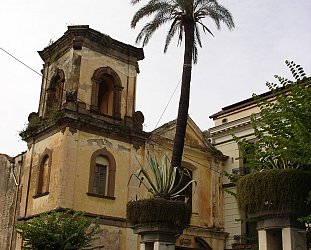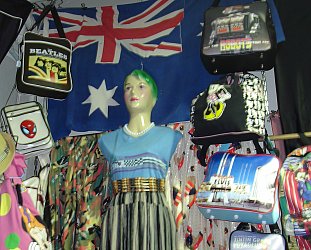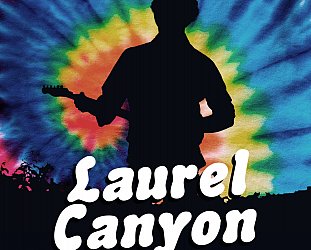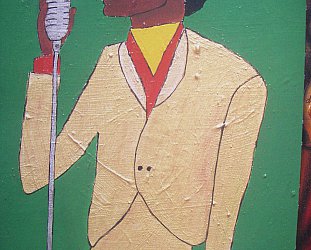Graham Reid | | 4 min read

Two years ago I was in and around Alice Springs, a town that trades on the idea it is close to Uluru. It isn't.
The town has a fascinating, if brief, white-fellah history, the landscape in that part of the desert is spectacular, and as an outsider it was hard to get a grip on Aboriginal life in the area. The rumours were bad enough, the reality was possibly worse.
This extraordinary film is a grim and uncompromising look at the barely-fictional lives of two Aboriginal kids (and their mob) who live near Alice. Hardly a word is spoken but it is eloquent, and if there is a redemptive ending (in some small way) then it is probably necessary after all that has preceded it: alcoholism; incessant reggae riffery played by the band on the compound; glue and petrol sniffing; the people being encouraged to make dot paintings then on-sold to tourists for many thousands of dollars; violence and rape . . .
Although I only spoke to a few Aboriginal people in Alice there were a few weird conjunctions when I was there.
Naturally I went to the art galleries (dots everywhere, mostly rubbish stuff) and could see instantly the difference between reputable dealers, galleries and painters and all the rest. A boiling controversy was a Four Corners expose which showed how local people were actually imprisoned behind locked fences on some compounds and had booze and food shipped in to keep them painting dots, dots and more bloody dots.
I learned however that seeing Aboriginal people sitting in a dusty riverbed
surrounded by bottles of booze might not be all it seemed: I was repeatedly told
(by Aboriginals and whites) that black-fellahs were outdoor people and so
preferred to sit there rather than in the cool of a pub.
If indeed they were allowed in some pubs.
There were three pubs in Alice where I spent quality time: the first was the place where tourists gathered for huge meals and drinks (I was ordering Bundy'n'cokes like they were jugs of beer, we all were) and Aboriginal people were conspicuous by their absence; then there was the English pub with its dartboard and so on (just weird) and you can guess there were no black-fellahs.
Finally there was the Todd Tavern named after that dusty hollow they call a river.
I got drinking with two guys from a compound a few hours away in the Spinifex'n'rock who'd already been on the booze for a few days straight and certainly since bird-call that morning.
One was part Aboriginal guy who was possessed by a deep-seated anger, almost incoherent from the booze, and jealous when I talked to his partner, a white guy who had been a nurse in Adelaide (if I recall) and had taken a posting on this aboriginal compound.
He'd only been there a couple of months in a two year-long contract and already had come to despise, if not hate, the Aboriginal people and the tribal leadership which he said ripped off government money.
I have no idea whether it is tough being gay in Alice, but these guys were immune to it: that's what rum, beer and then vodka shots can do to you.
The Aboriginal guy told me he had been adopted out to a white family when he was small and had reconnected with his own people a few years ago and didn't like them. They were all alcoholics. In fact he hated being black, he said through slurring and gulps of rum.
He stumbled off to another table where he sulked and glared at me menacingly, the white guy just kept talking but moderated his stance.
Actually the people were fine, he conceded, but were being paid to do nothing but sit around, so they drank, drove and crashed cars, sank into alcoholic depression and dependency, played the most awful reggae or country music (I agreed with him on that) and largely were a people dispossessed.
It was an Australian tragedy that white people were happy to ignore because to deal with it was too complex, too awful, too shameful.
Later we three sat drinking again when the white guy fell asleep at the table and immediately others in the bar pointed him out: the landlady came over and told the both of them to leave, there was shouting from the Aboriginal guy who looked about to start a fight but was too far gone to swing a blow, the white guy talked his boyfriend down and they left the bar amidst jeers from the people at the next table and shouts and incoherent threats from the Aboriginal guy.
It was messy and tragic in its own way.
Later I saw them down in the dustbowl of the Todd River (right) drinking again, this time with some young black-fellahs.
I waved. They had no idea who I was.
Samson and Delilah -- which can be critiqued for its filmic values, certainly -- takes you into the edge of this world, and into that dusty hollow under a bridge across the Todd, the carpark near that hotel, the Coles supermarket -- and most of all to the place where we can probably never go: that netherworld of hopelessness on a compound where people make dot paintings for a pittance, where today is yesterday and tomorrow because they are all the same, where death and drunkenness and mindless reggae riffing are just part of the contract of life . . .
Samson and Delilah is a stark, important and mostly bleak film that director Warwick Thornton from Alice Springs says doesn't include anything he hasn't seen.
I believe him. Unfortunately.
NB: The DVD comes with a "making of" doco (funny and sad by turns) and four short, beautifully shot, films by Thornton: Nana is a child's eye view of her grandmother's life on a compound; Green Bush is a night in an Outback Aboriginal radio station; Mimi is a spook-spirit piece which doesn't really cut it; and Payback is sharp, insighful and thought-provoking. Very good value bonus features.









post a comment